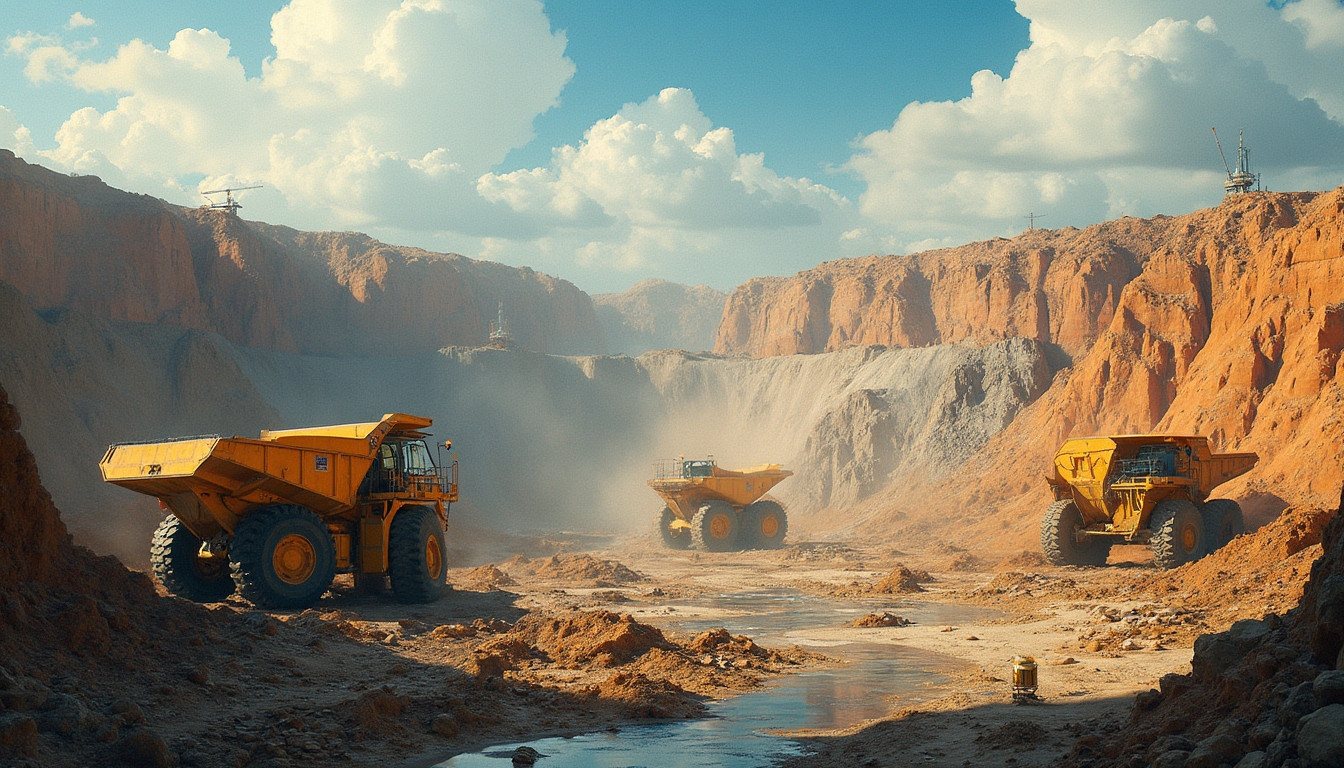Introduction
The "Ore Deposits 101" series is designed to provide a deep understanding of ore deposits, focusing on their formation mechanisms, classification, and economic importance. This series consists of 11 talks, each covering various elements such as Earth's structure, plate tectonics, metal concentration processes, and specific types of ore deposits. The series concludes with key insights on natural concentration processes and the "melt, rise, and cool" phenomenon in ore formation.
Fundamentals of Ore Deposit Formation
Earth's Structure and Composition
Understanding Earth's composition is central to comprehending the formation of ore deposits. Earth consists of three primary layers: core, mantle, and crust. The crust, the outermost layer, is where the majority of ore deposits are situated. Human limitations in accessing Earth's interior mean that much of our understanding comes from indirect methods, such as studying geological processes like plate tectonics and magma dynamics.
Crustal Abundance of Metals
Metals exist in the Earth's crust in relatively low concentrations. For instance, iron, although widespread, often requires specific processes to achieve concentrations that are economically viable for extraction. Magmatic and hydrothermal processes are crucial in concentrating these metals to economically workable levels.
Economic Thresholds for Metal Extraction
Profitability is dictated by both the volume of known ore reserves and the concentration of the target metal within those reserves. Even high-grade ores can be financially impracticable if the reserves are marginal or the costs associated with extraction are prohibitive.
Plate Tectonics and Ore Formation
Basic Principles of Plate Tectonics
Plate tectonics involves the movement of large lithospheric plates. Such movements result in features like subduction zones, areas where one plate descends beneath another. This can lead to volcanic activity and the formation of hydrothermal ore deposits around zones like the Ring of Fire.
Subduction Zones and Additional Rock Melting Mechanisms
Subduction zones are a key context for ore deposit formation due to their association with intense geological activity. Beyond subduction, processes like crustal thickening from tectonic forces or magma injection from deeper layers contribute significantly to the generation of ore deposits.
Melting and Metal Concentration Processes
Partial Melting and Magma Movement
Partial melting of Earth's crust generates magma capable of transporting metals upwards. This process forms the crux of many ore deposits. Magma rises through the crust due to its buoyancy, potentially leading to significant concentrations of metals.
Formation and Cooling of Magma Chambers
As magma collects and cools in underground chambers, it can crystallise, separating into distinct layers and concentrating metals in particular zones. This phenomenon is pivotal in the formation of many ore types.
Volatile Separation and Crystal Fractionation
During cooling, volatile components like water vapour and carbon dioxide escape from the magma. This separation, coupled with the process of crystal fractionation, enhances the concentration of metals into economically viable deposits.
Classification of Hydrothermal Ore Deposits
Deep Crustal Deposits
These types of deposits form at depths ranging from 10 to 50 kilometres. They are often linked with subduction zones and can house copper and gold among other metals, formed through intricate hydrothermal systems.
Mesothermal to Epithermal Zones
Mesothermal deposits emerge at depths of 1 to 10 kilometres through regional metamorphism. In contrast, epithermal deposits develop at shallower depths and are frequently associated with volcanic actions.
Surface and Placer Deposits
Surface deposits, including placer types, result from the erosion of primary sources and subsequent metal concentration in sediments, typically extracted via surface mining techniques.
Specific Ore Deposit Types
Mafic and Ultramafic Intrusions
Mafic and ultramafic igneous rocks potentially host substantial nickel and copper deposits. These rocks stem from the cooling and solidification of magma.
Porphyry and Volcanic-hosted Massive Sulfide Deposits
Porphyry deposits are notable for their copper contents and link with volcanic action. The Volcanic-hosted Massive Sulfide (VHMS) deposits associated with oceanic volcanic activities can present significant copper reserves.
Conclusion
Natural concentration mechanisms such as magmatic and hydrothermal processes are of paramount importance for economic mining activities. The "melt, rise, and cool" sequence is fundamental in forming diverse ore types, with upcoming discussions set to focus on exploration strategies and their significance within the mining sector.
Key Takeaways
Crustal Abundance vs. Economic Viability
While metals are abundant in the crust, they often appear in low concentrations, thus necessitating concentration processes for mining profitability.
Role of Melting and Cooling in Metal Concentration
Partial melting and subsequent cooling of magma are vital for concentrating metals into specific geological layers, making them extractable for commercial use.
Variations in Deposit Types
Ore deposits exhibit variations based on depth and environmental conditions. Understanding these variations is critical in formulating effective exploration and mining strategies.
Ready to Dive Deeper into Ore Deposits?
Unlock the secrets of major ASX discoveries and streamline your exploration efforts with Discovery Alert’s AI-driven notifications. Designed for investors of all levels, our service makes understanding complex geological data easy, highlighting major discoveries and actionable opportunities. Enhance your investment strategy today with a 30-day free trial. Explore Discovery Alert Now.



